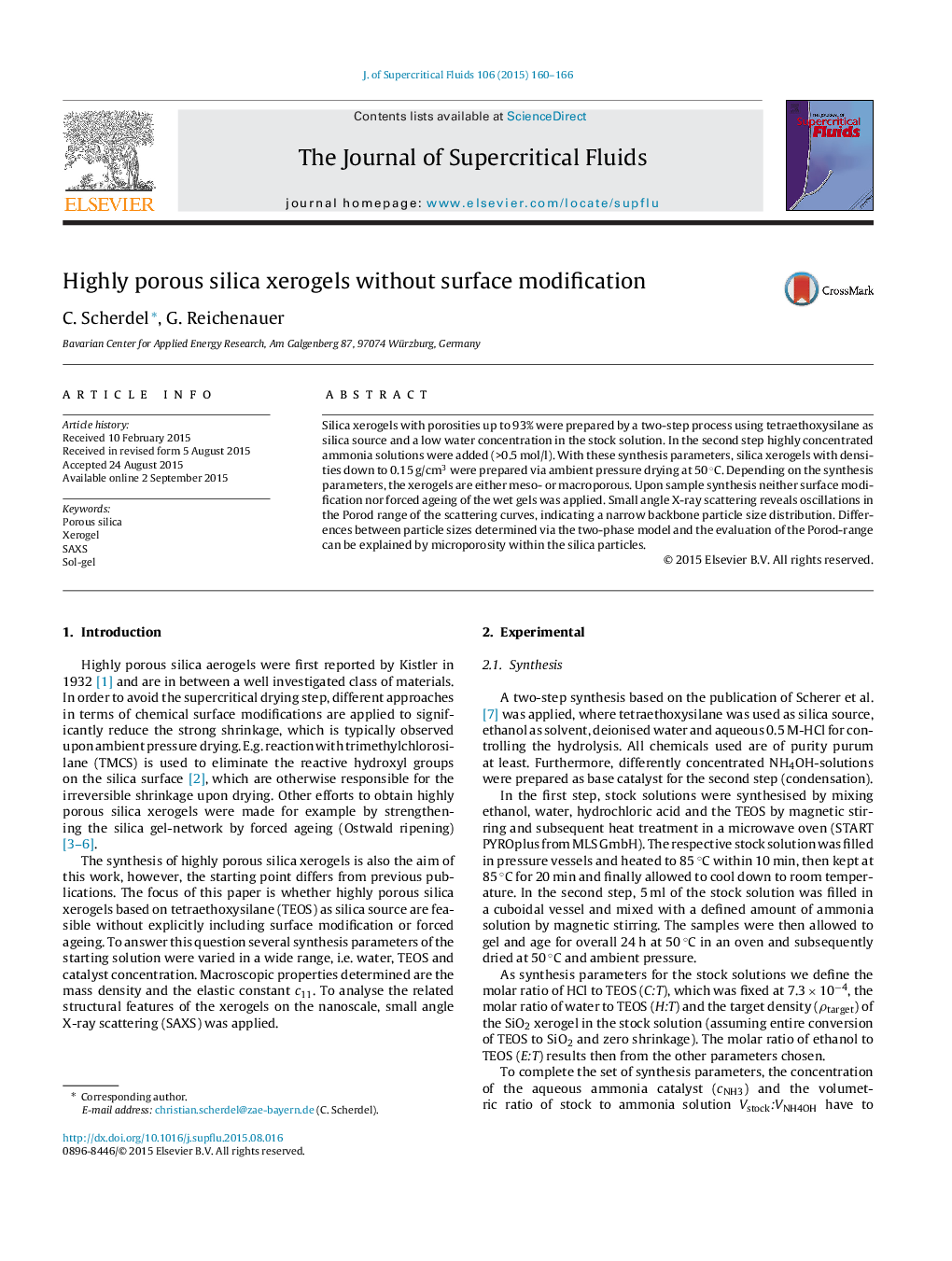| Article ID | Journal | Published Year | Pages | File Type |
|---|---|---|---|---|
| 230285 | The Journal of Supercritical Fluids | 2015 | 7 Pages |
•Silica xerogels with porosities up to 93% are observed.•Neither surface modification nor forced ageing of the wet gels was applied.•Oscillations in SAXS show a narrow particle size distribution.•Low density correlates with predominant macroporous xerogels.
Silica xerogels with porosities up to 93% were prepared by a two-step process using tetraethoxysilane as silica source and a low water concentration in the stock solution. In the second step highly concentrated ammonia solutions were added (>0.5 mol/l). With these synthesis parameters, silica xerogels with densities down to 0.15 g/cm3 were prepared via ambient pressure drying at 50 °C. Depending on the synthesis parameters, the xerogels are either meso- or macroporous. Upon sample synthesis neither surface modification nor forced ageing of the wet gels was applied. Small angle X-ray scattering reveals oscillations in the Porod range of the scattering curves, indicating a narrow backbone particle size distribution. Differences between particle sizes determined via the two-phase model and the evaluation of the Porod-range can be explained by microporosity within the silica particles.
Graphical abstractFigure optionsDownload full-size imageDownload as PowerPoint slide
